If you’ve ever explored the Cross Island Trail between Old Love Point Park and Gibson’s Grant, then you’ve experienced a part of Kent Island’s industrious railroad history. This two mile east-west section follows the rail bed that once connected the Stevensville and Chester railroad stations. The former railroad ran the entire island from Love Point to the Kent Narrows, but only this portion of the trail repurposes the path.
In February 1894, the Maryland Legislature approved a charter for the Queen Anne's Railroad Company. With the goal of providing transportation between Baltimore, MD, and Cape May, NJ, the company got to work laying 60 miles of rail the following year. The line opened in sections: Queenstown, MD to Denton, MD on July 15, 1896, extended to Greenwood, DE on January 1, 1897, and completed to Lewes, DE on March 1, 1898. Steam powered ferries, such as the Smokey Joe and Westmoreland, provided additional transportation connecting Queenstown, MD to Baltimore, MD and Lewes, DE to Cape May, NJ, fulfilling the company’s goal. The Queen Anne’s Railroad opened new markets for eastern shore seafood, produce, and crops.
The railroad connected to Kent Island in February 1902, when the company completed a 12.9 mile addition, extending the western terminus from Queenstown to Love Point, the island’s northern tip. The chosen location, at the end of present day Pier Avenue on the Chester River, provided a better harbor and closer ferry connection to Baltimore. Here stood the majestic Love Point and Fillmore Hotels, where ferry passengers arriving from Light Street in Baltimore spent many a magical night. The nearby Camp St. Martin was popular for the younger generation, offering numerous amusements. The entire trip from Love Point to Lewes, DE, took only 2 hours and 27 minutes and cost less than $1.00.
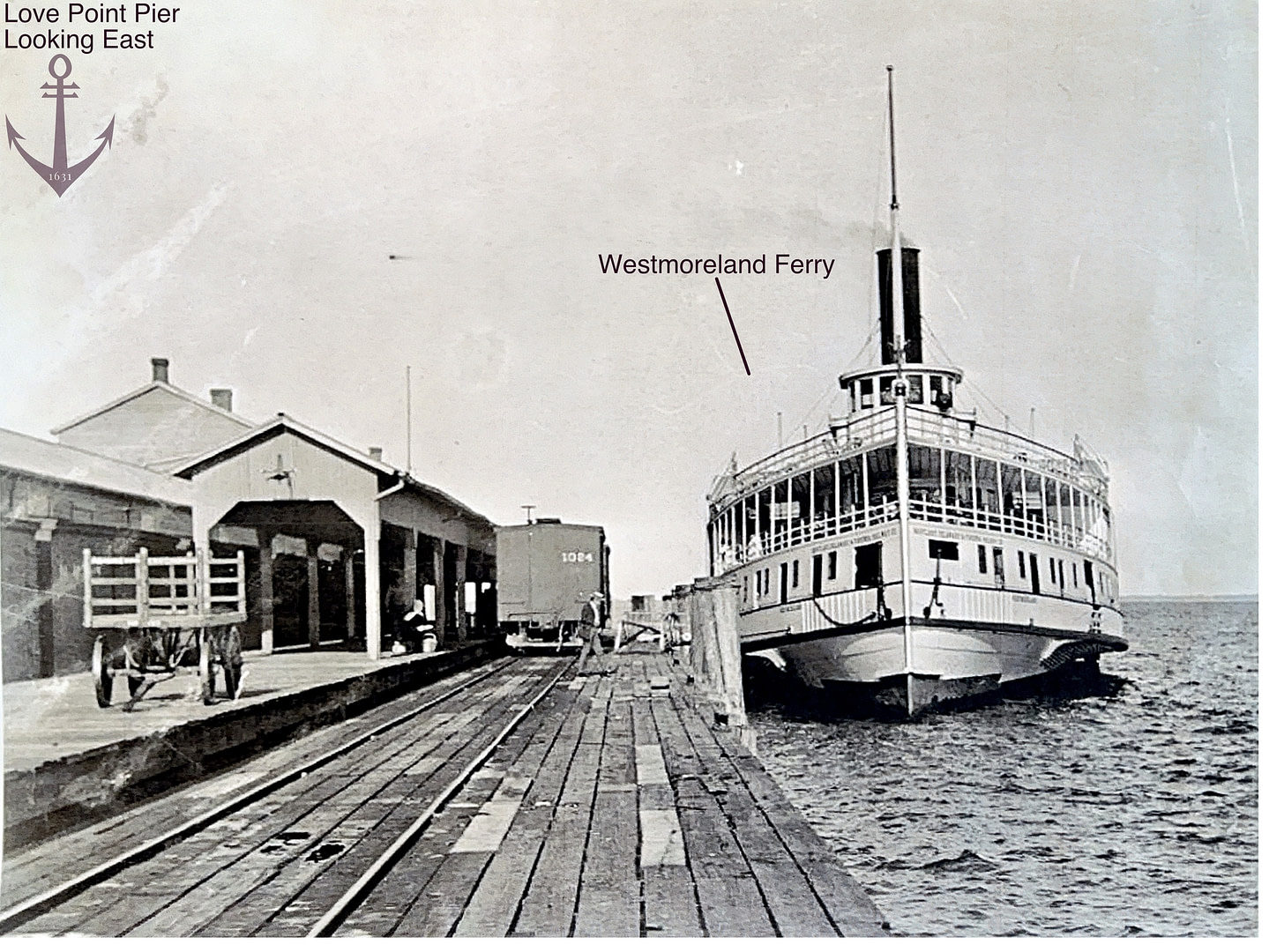
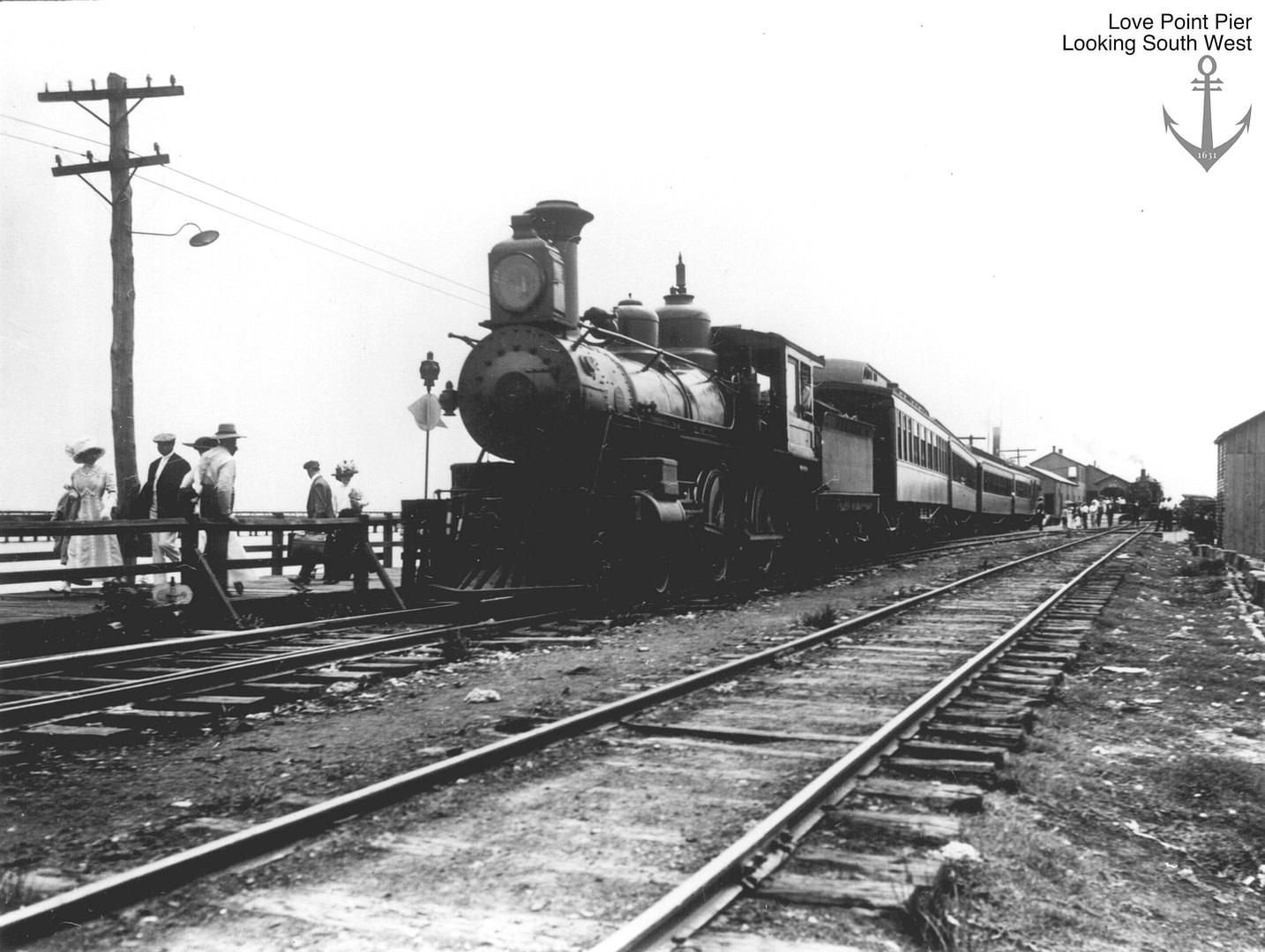
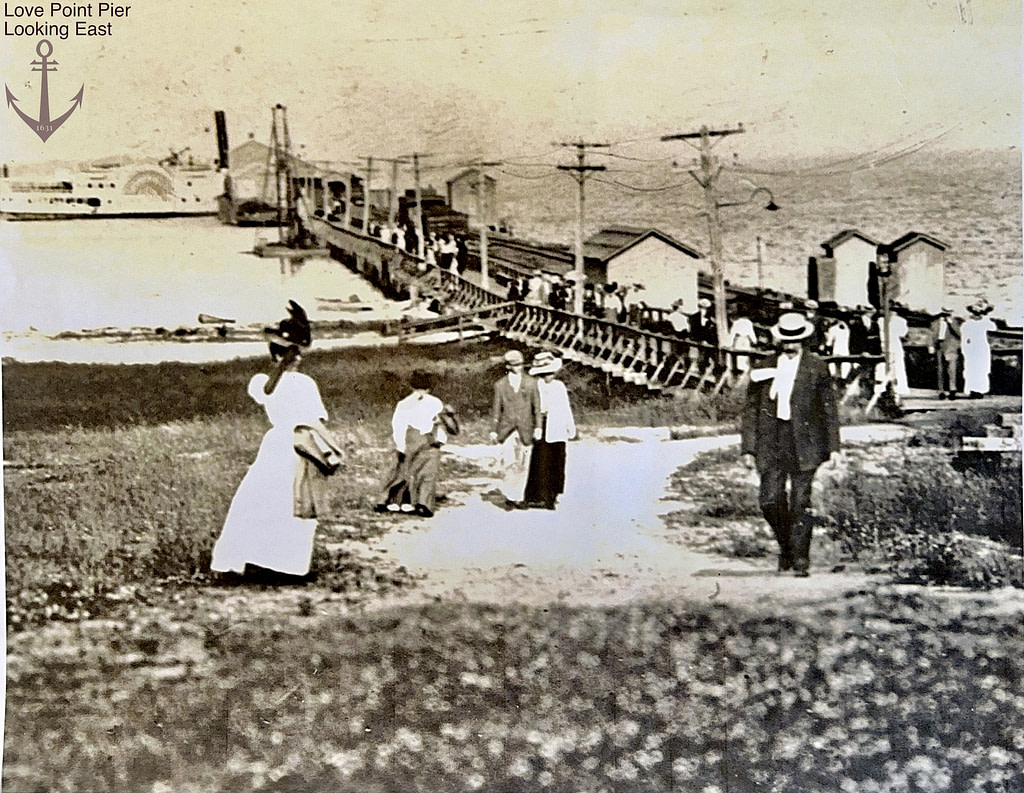
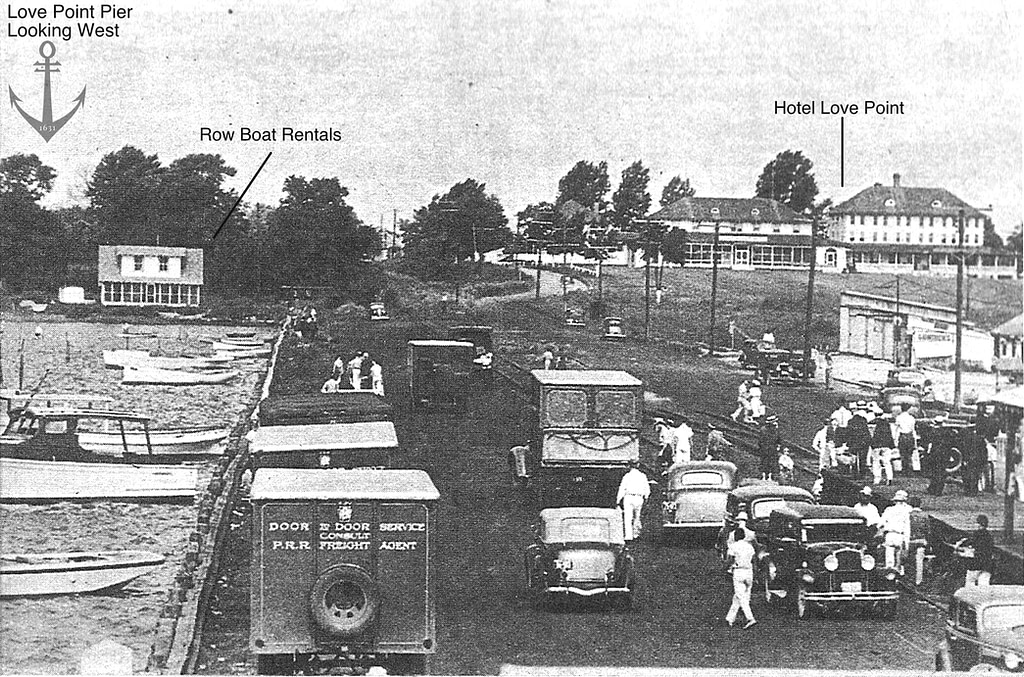
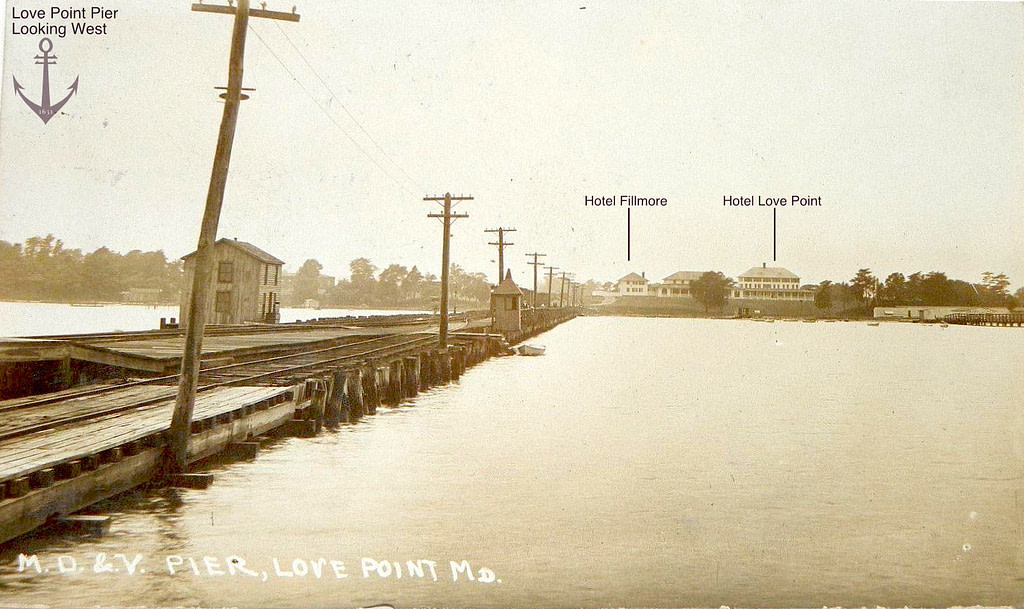
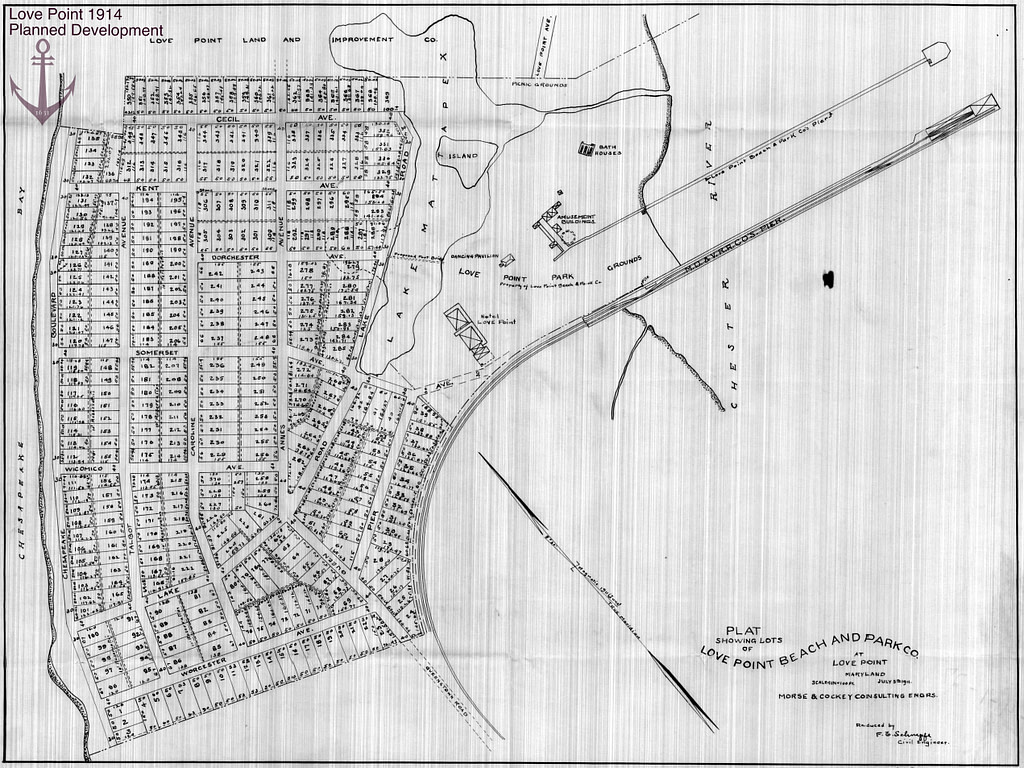
The arriving locomotive used a wye, a triangular section of track, to perform a three-point turn, positioning itself for its trek back across the island and out to the Atlantic. Departing Love Point, the train traveled south towards the first of five stations along the newly added line. Its tracks ran parallel to Love Point Road, curving east at the present day Kent Island High School, and crossing over Old Love Point Road, where the two roads split. Here, passengers arrived at the Stevensville Station, which stood 400 feet northwest of the entrance to the Cross Island Trail at Old Love Point Park.
Stevensville was the busiest of the island stations. The grounds included a maintenance shop, freight house, and town scales. The station had a waiting room where passengers purchased tickets, and an agent’s office with a telegraph key and receiver in a bay window overlooking the tracks in both directions. Toilet facilities and a 20 foot hitching rail were about 75 feet behind the station.
From Stevensville, the locomotive headed southeast, traversing the present day Cross Island Trail towards its next stop. One significant sight on this span is the bridge at Cox Creek, whose pilings are part of the original railroad trestle bridge. Snowdrifts during the blizzard of 1911 blocked trains here until workers could shovel them out. This structure stood until the construction of the trail, which opened on August 22, 1998. Shortly after crossing Castle Marina Road, the tracks temporarily departed the trail following Piney Creek Road until meeting back up at the Four Seasons water tower behind Advantage Self Storage. Here the trail turns south, crossing a bridge while the train would have continued through the chain-link fence, stopping at the headwaters of Macum Creek where the Chester Station stood.
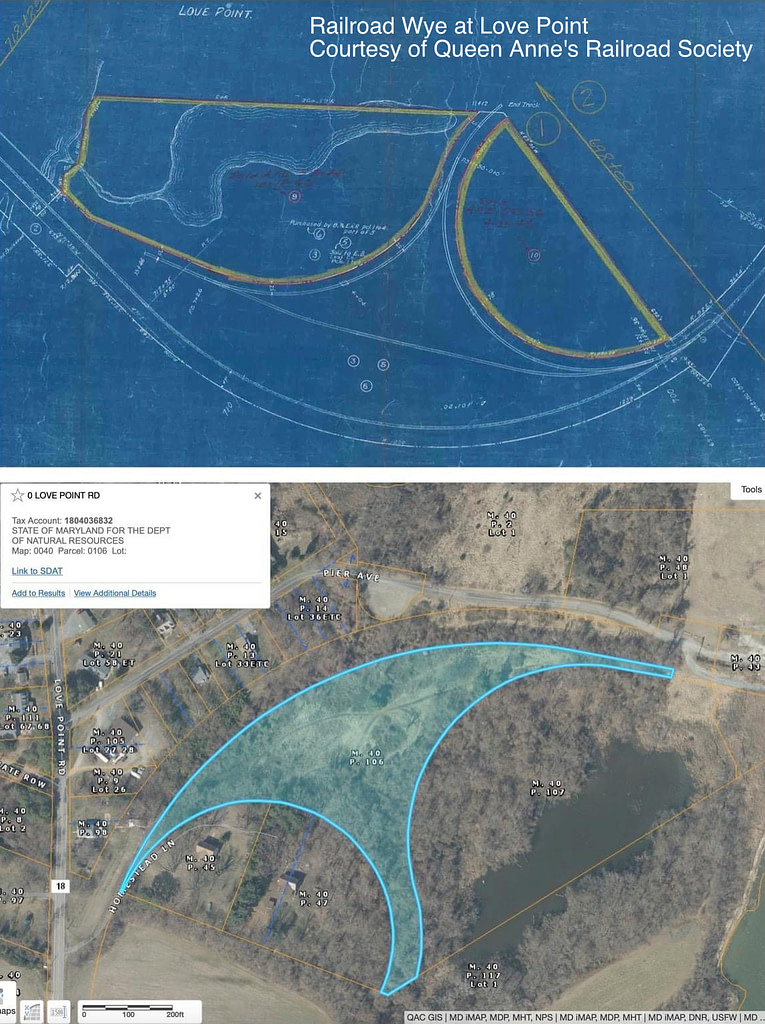
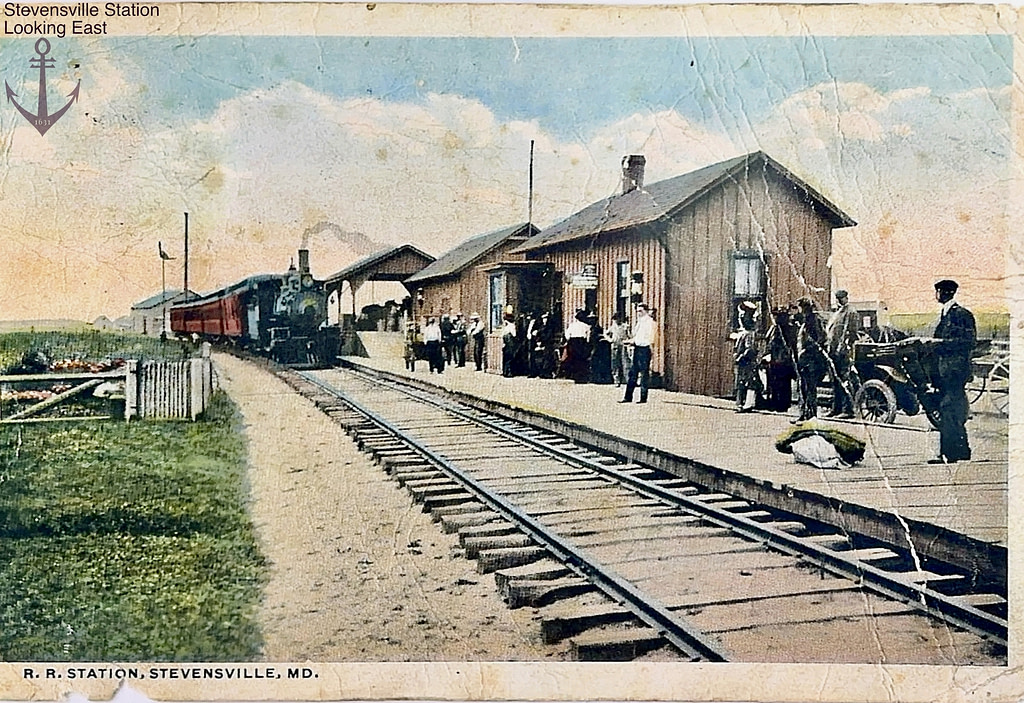
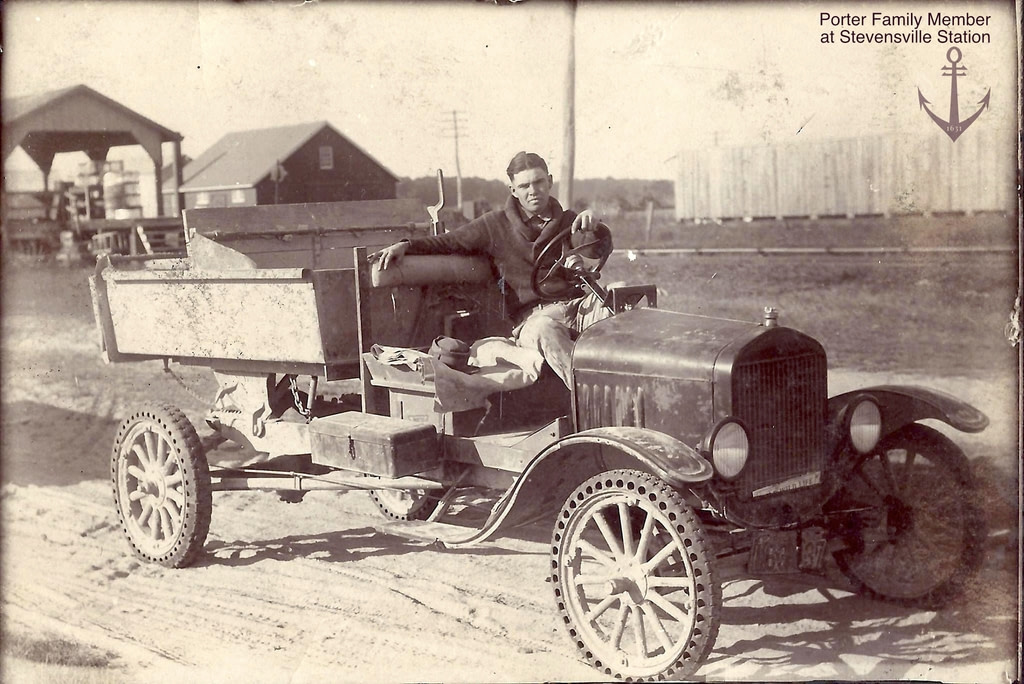
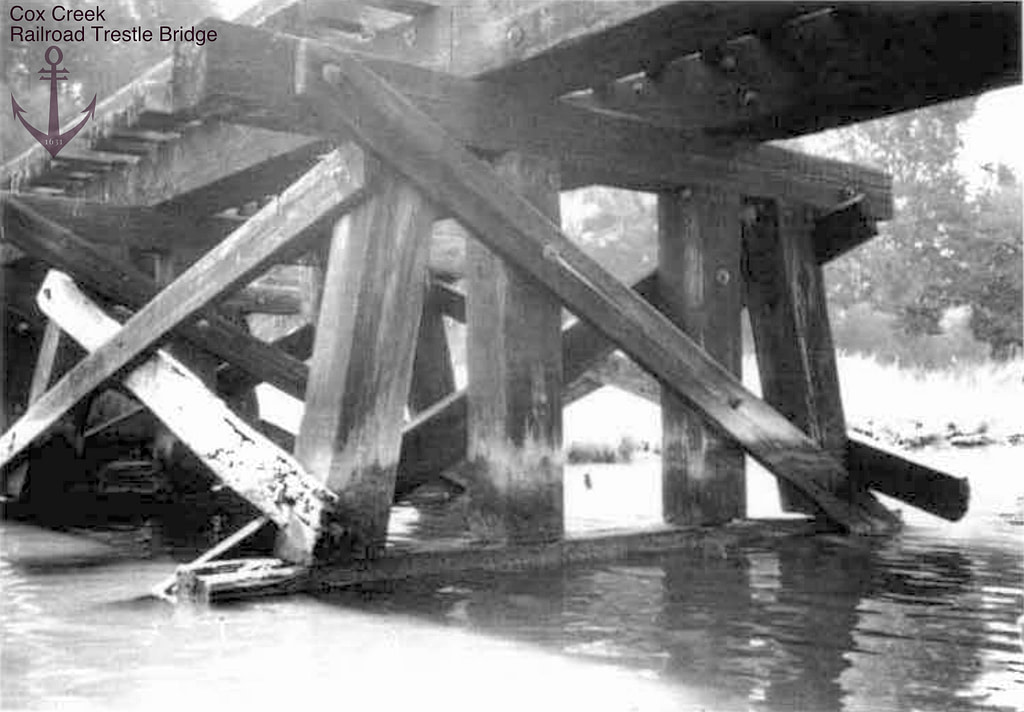
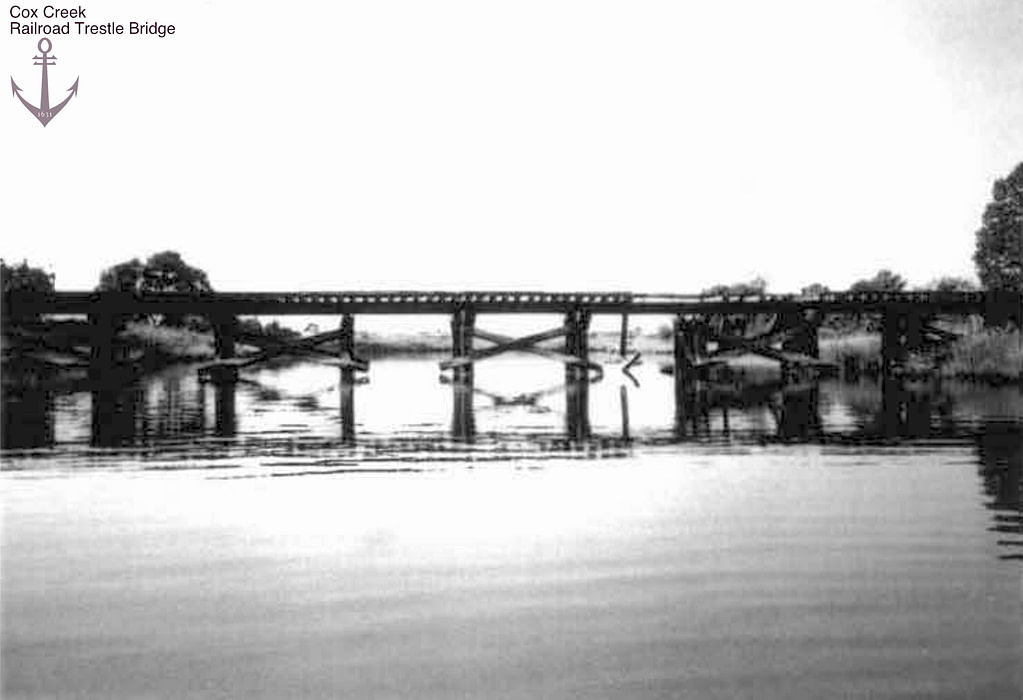
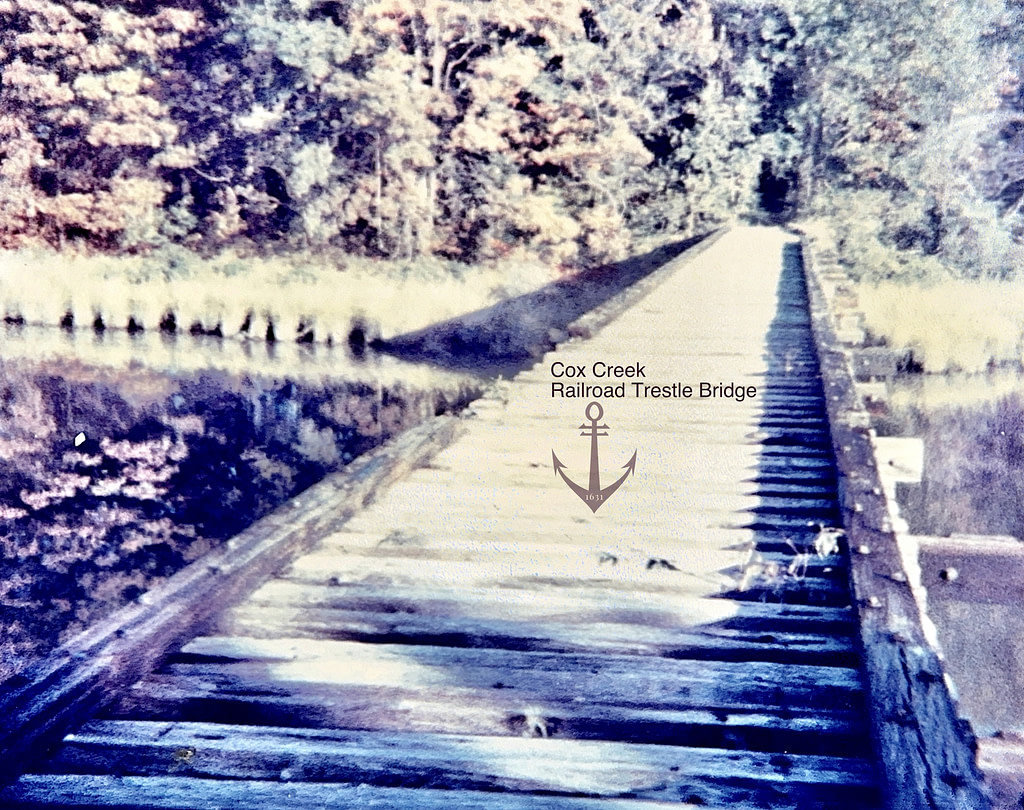
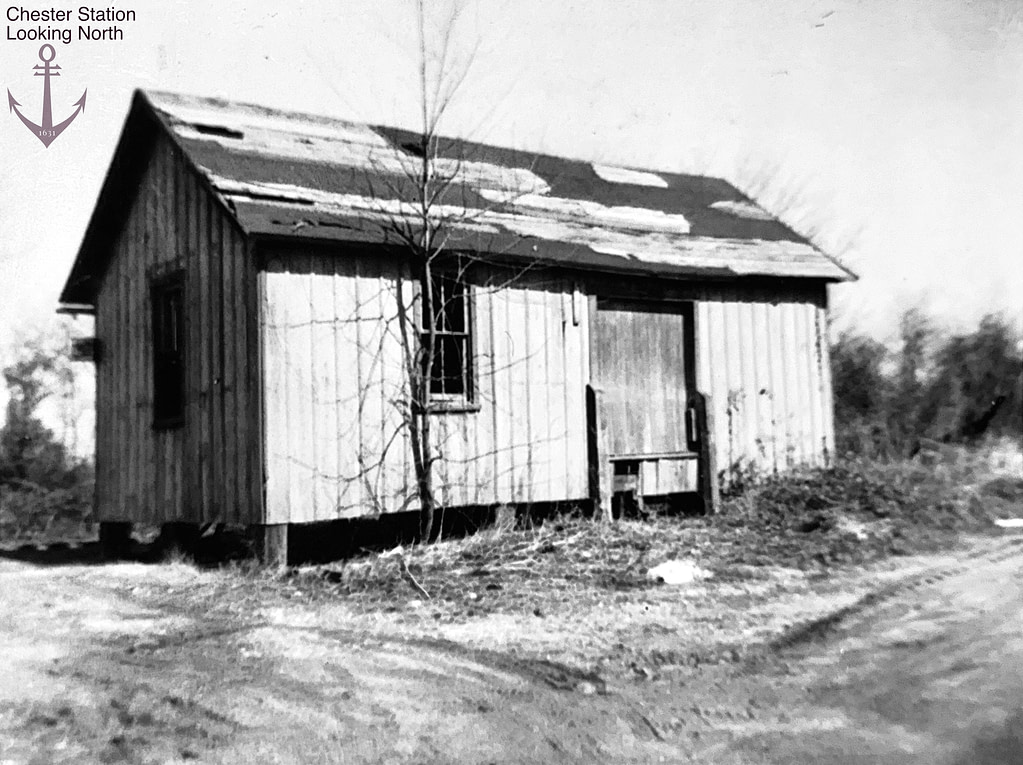
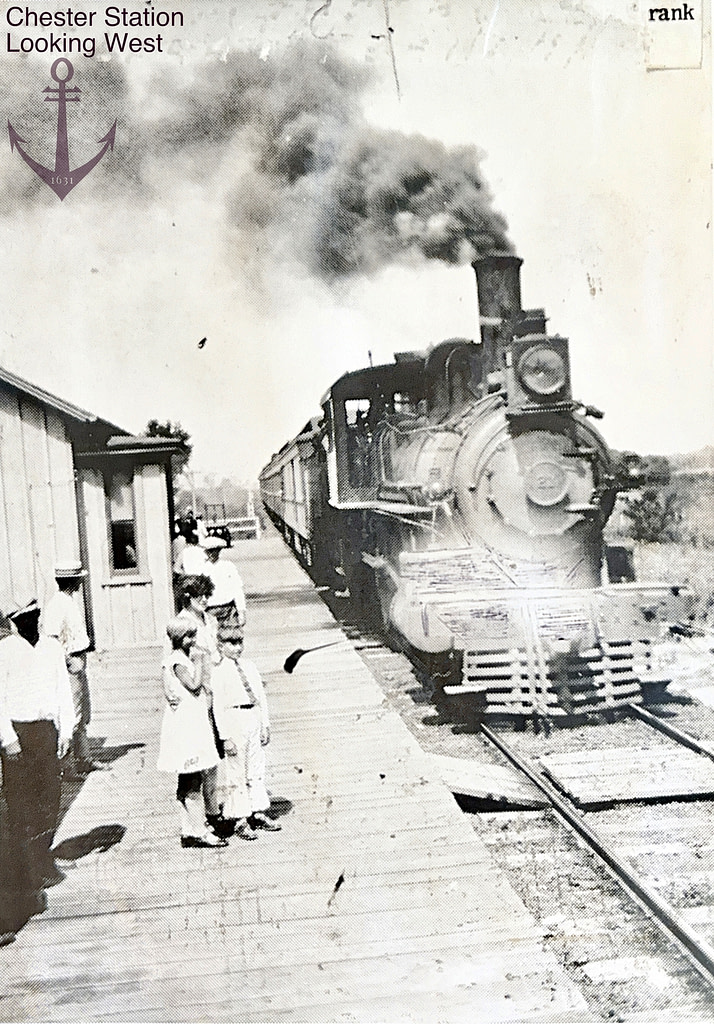
The railroad continued southeast, 2,000 feet, mirroring the trail before crossing over present day Route 50/301 at Whites Heritage Lane of Gibson’s Grant. It remained parallel to Route 50/301 until Exit 41, where it progressed through the marsh, aligned with Medic Drive and carried on eastward across the Kent Narrows railroad bridge. Pilings that supported the tracks over Piney Creek still stand just west of this exit.
You can still visit remnants of the twentieth century railroad bridge at the end of Medic Drive in the Watermen’s Boat Basin. This special bridge was mounted on a hand-operated turntable and controlled by my great-grand uncle, Joe Bryan. He kept the bridge in an open position for boat traffic until rail access to the island was required. Joe would then be phoned to close the bridge… if he could be reached. As per my grandmother, Donna May Bryan (his niece), Joe was hard to locate, as he frequently imbibed at Bill’s Tavern (later Angler’s) on the east side of the narrows. The Kent Narrows station was located just north of the bar.
The original Route 18 vehicle draw bridge spanned the narrows 200 feet south of the railroad bridge, remnants of which are visible at the end of Wharf Drive. In fact, if you stand at the bathrooms of the Big Owl Tiki Bar, you are standing in the middle of the road where the drawbridge landed. Route 18 continues east, passing the final of the five 1902 stations at the end of the aptly named Station Lane in Grasonville (1926), previously called Ford’s Store and Winchester. The tracks proceeded to six more stations in Queen Anne’s County: Queenstown, Centreville, Bloomingdale, Wye Mills, Willoughby, and Queen Anne, which was the junction point with the Delaware & Chesapeake Railway.
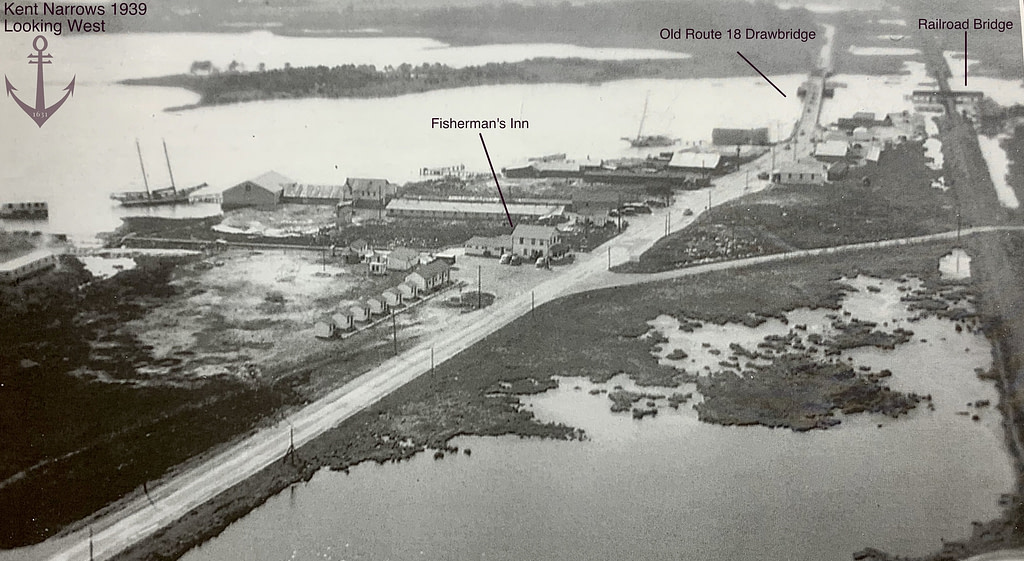
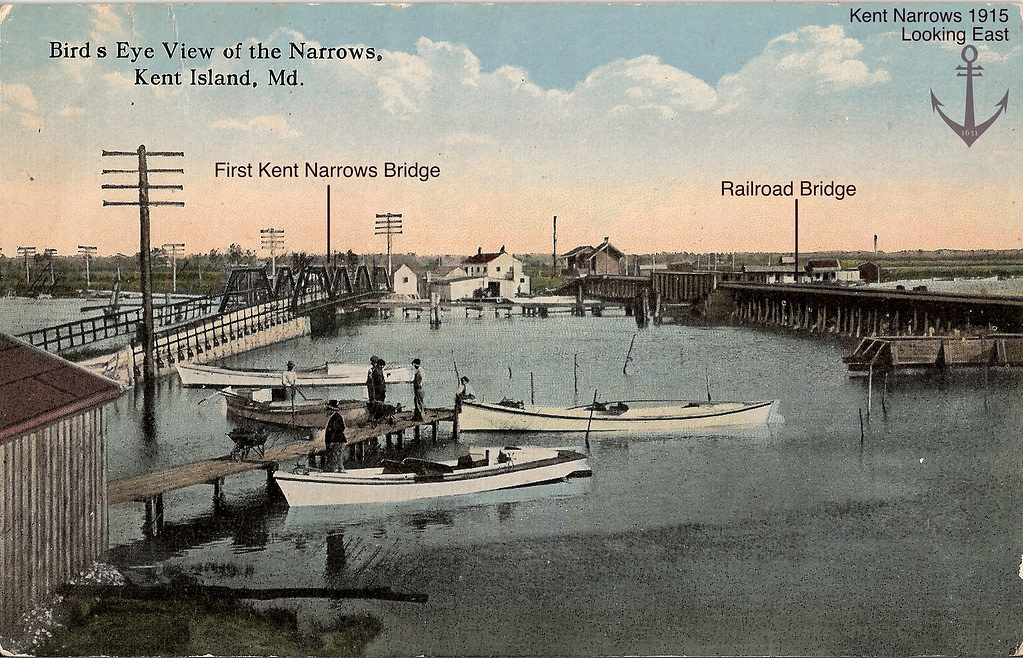
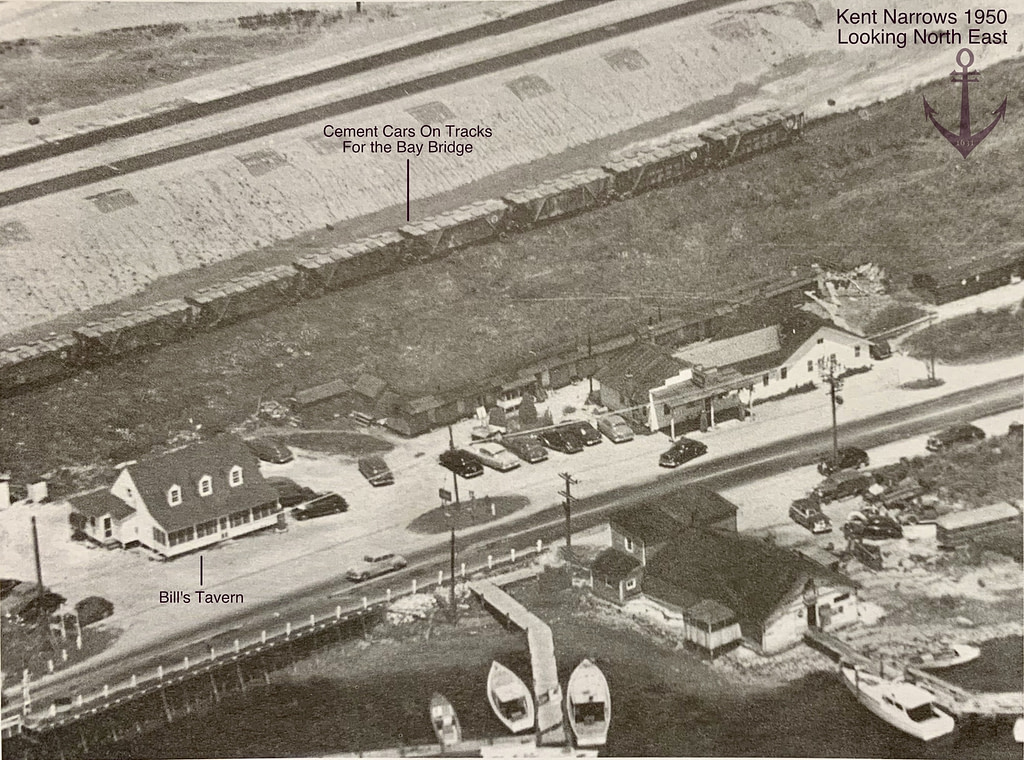

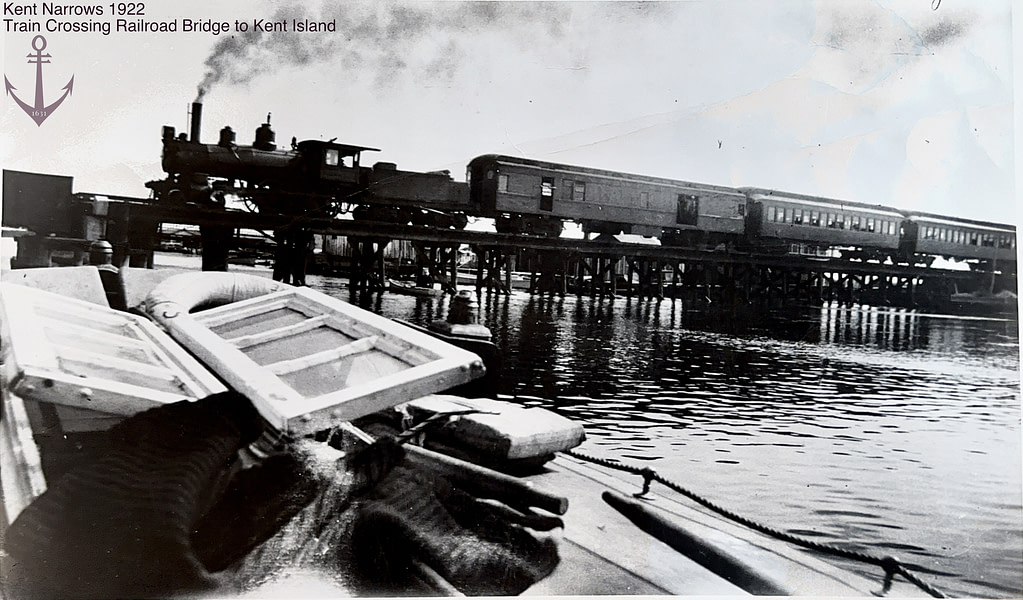
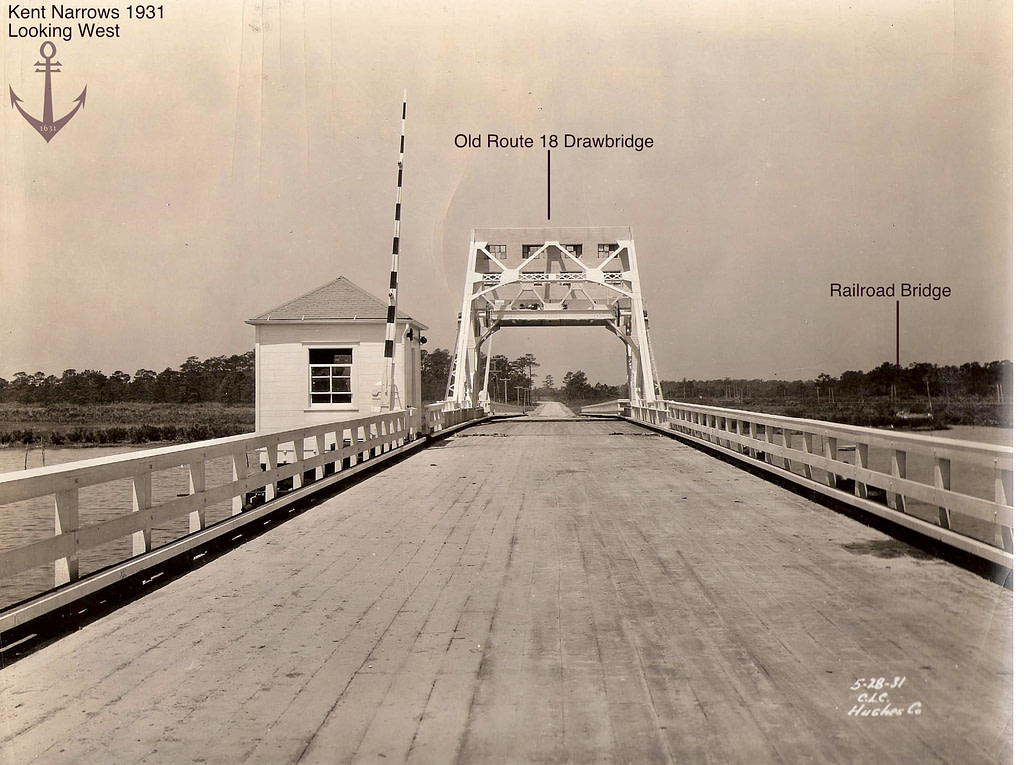
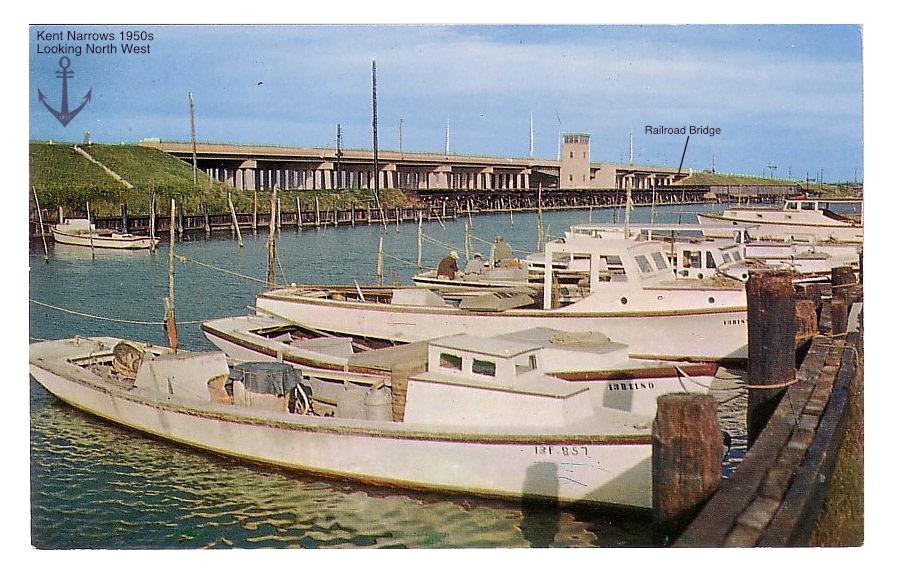
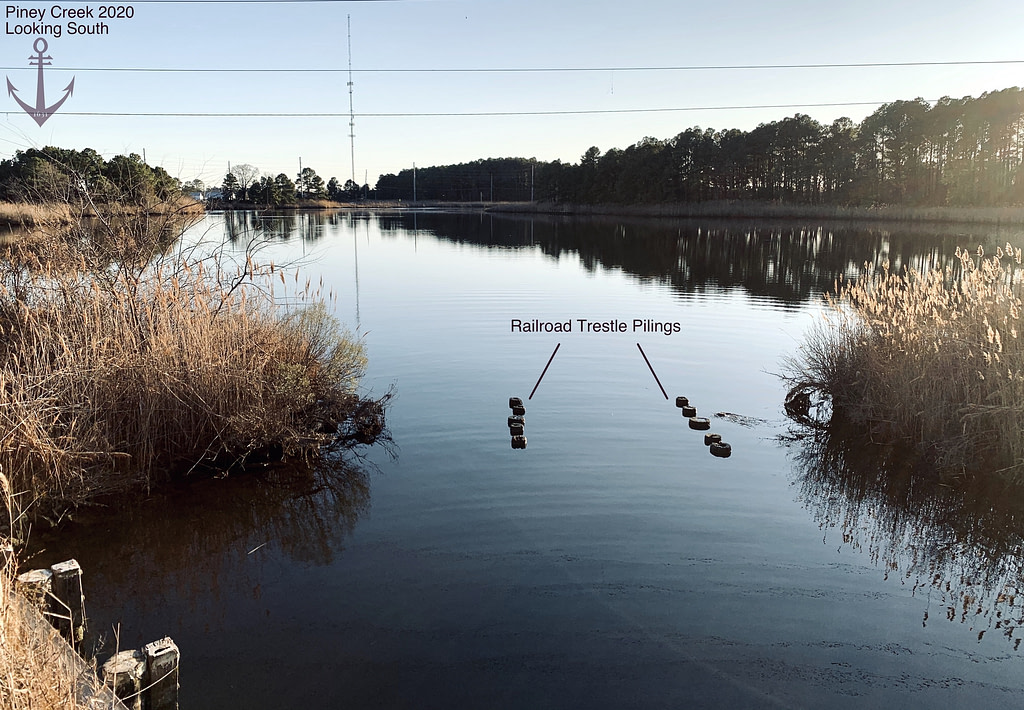
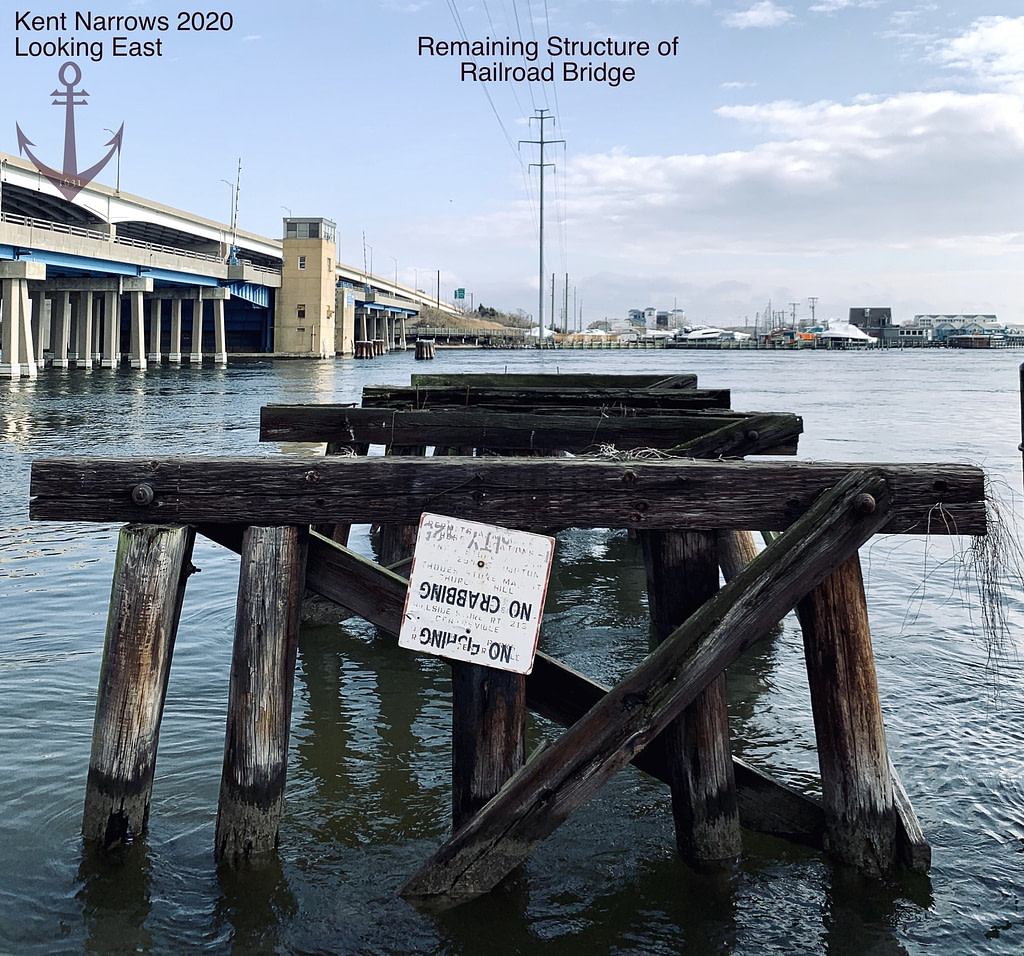
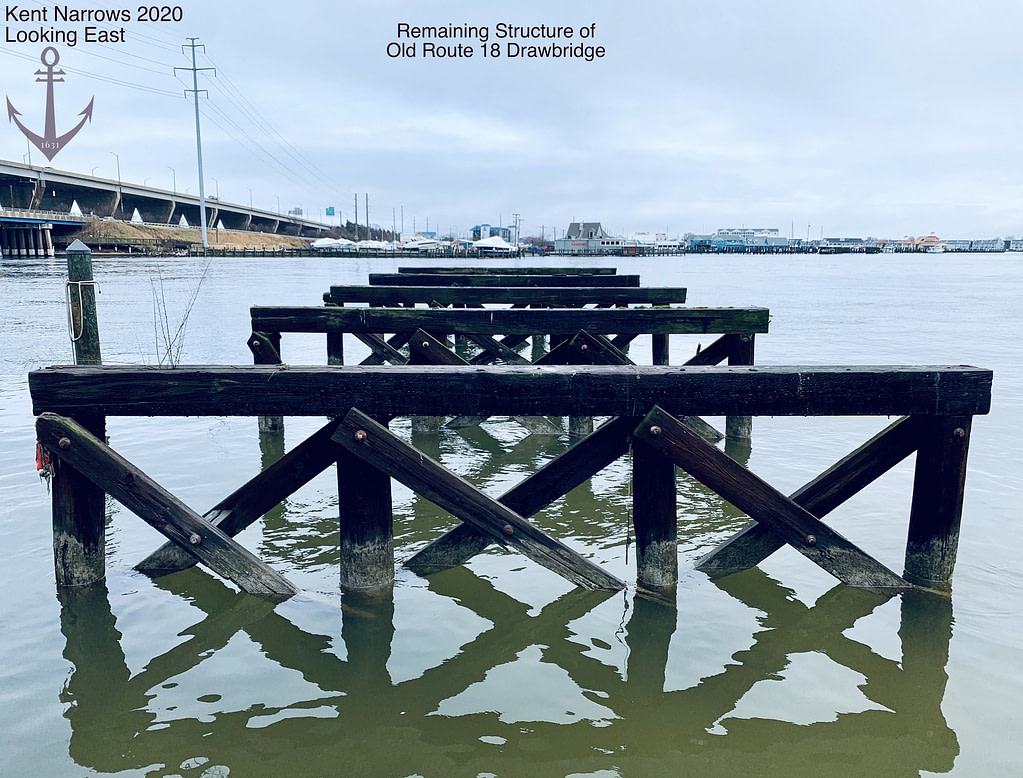
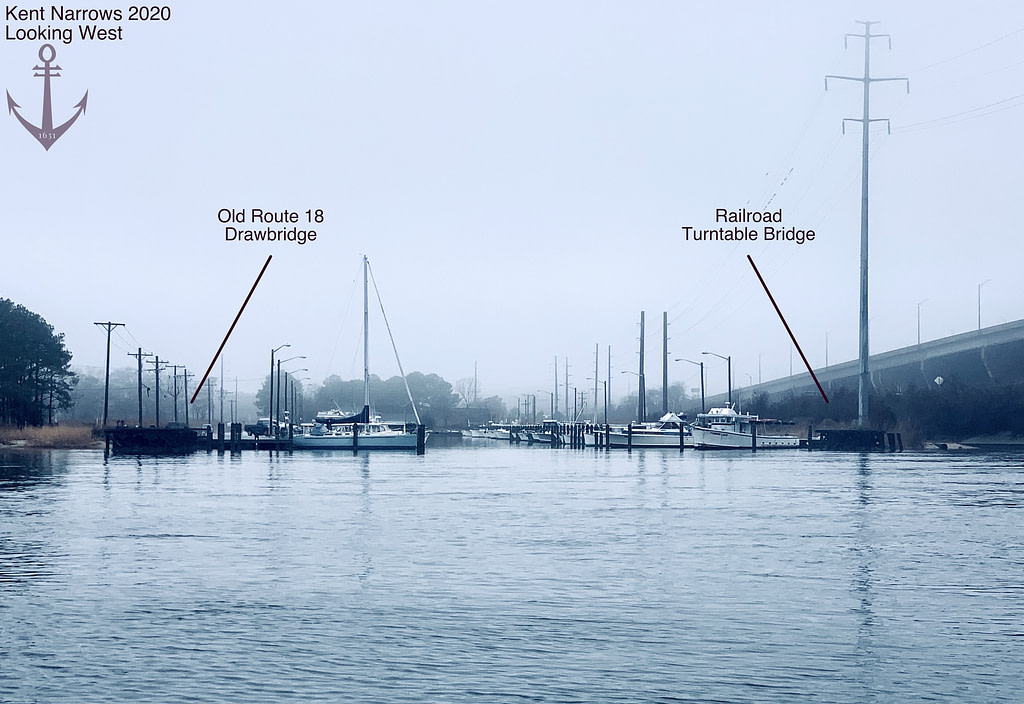
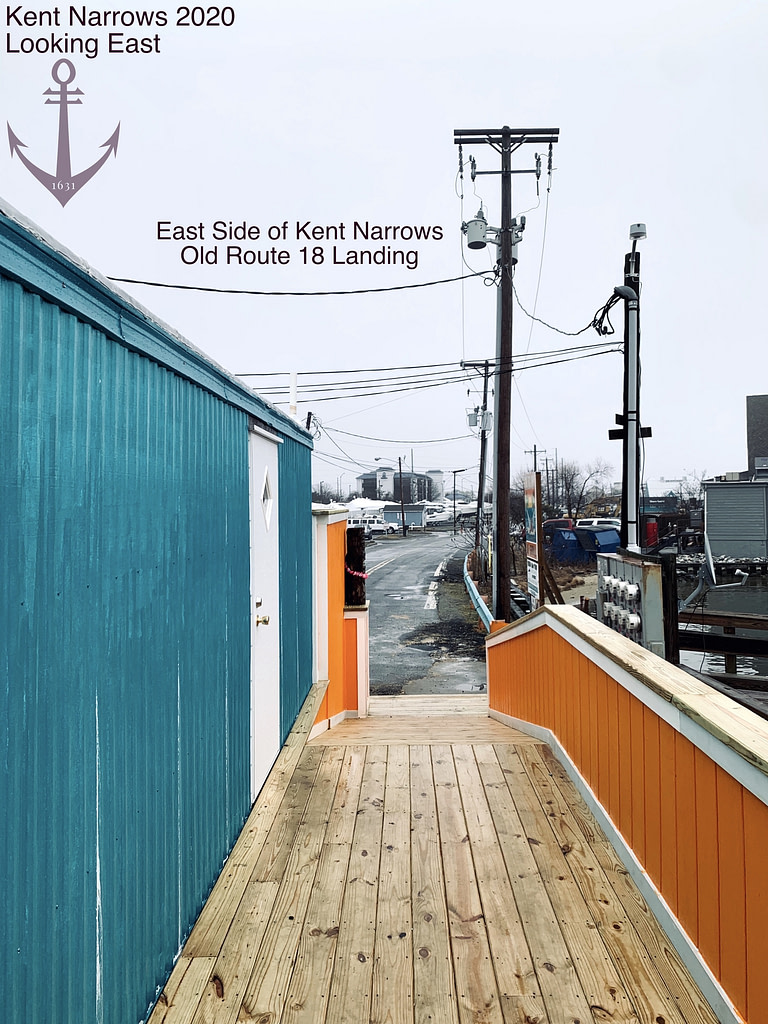
Trains traversed the island twice a day, hauling passengers, freight, mail, and newspapers from Baltimore and beyond. Special excursion or express lines occasionally traveled through as well. The 1902 Kent Island track was a welcomed addition to the eastern shore, but a series of unfortunate events were coming for the Queen Anne Railroad Company.
The winter of 1903 froze the bay solid, blocking all ferry traffic for nearly a month. Then, on February 7-8, 1904, the Great Baltimore Fire unleashed hell, destroying a massive section of the city’s commercial district. These incidents were devastating for the company, since much of its revenue came from Baltimore.
The Queen Anne Railroad Company was in dire straits and fell into the hands of the behemoth Pennsylvania Railroad, a.k.a. the Pennsy, the largest revenue grossing corporation in the world. They had a budget second only to the US government. On January 27, 1905, the Pennsy purchased the Weems line of steamers, the Chester River Steamboat Company, and the Queen Anne Railroad Company. The three firms were merged and renamed the Maryland, Delaware & Virginia Railroad Company (MD&V) then placed under the control of the Baltimore, Chesapeake and Atlantic Railway (BC&A). Locals called these two entities something a little different: Muddy Dirty & Vicious and Black Cinders & Ash.
This four million dollar deal gave the Pennsy absolute control over all transportation facilities on Maryland’s Eastern Shore. However, unlike the Western Shore, the Eastern Shore lines struggled because of the smaller towns along their routes and their tourist driven, fluctuating seasonal business. Incapable of improving finances, the Pennsy sold off several MD&V properties in May 1923. They made the 30 mile rail line between Denton, MD, and Love Point, part of the Baltimore and Eastern Railroad (B&ERR), a subsidiary of the Pennsy.
As automotive transportation grew, commuter rail use declined and Kent Island received additional ferry services at Matapeake and Romancoke. The B&ERR applied to the Public Service Commission to discontinue passenger service from Easton, MD to Love Point on January 14, 1938. Island residents headed to Baltimore for a public hearing on February 10, arguing the closure would cause a significant detriment to their livelihoods. The effort made no difference though, and on March 29, 1938, the last passenger car made its way to Love Point, leaving only a tri-weekly freight service.
As the 1950s approached, the Chesapeake Bay Bridge was in sight and the end was near for the railroad. Patronage of the Baltimore to Love Point ferry no longer supported the operating cost, and the B&ERR received permission to end the service on August 1, 1947. The fading freight line was used to transport construction material for the bridge that would render it obsolete, assisting in its own doom. The remaining Kent Island ferries at Romancoke and Matapeake were discontinued with the opening of the Bay Bridge in July 1952, leaving one way to cross the bay.
On January 17, 1956, the Pennsy pleaded to the Interstate Commerce Commission to discontinue the fading freight line between Love Point and Queenstown, having operated at a loss for three years. In fact, no freight cars had traveled west of the Kent Narrows bridge since October 1954, as the bridge was deemed unsafe. They received permission by March and, despite a petition drawn by the Tidewater Chamber of Commerce, officially abandoned the rails on June 25, 1956, marking the end of an era. The remaining rail line followed suit soon after. Kent Island’s short-lived iron horse and steel rails had been conquered by progress.
The Stevensville Station is the only island railroad building that escaped destruction and was moved by the Kent Island Heritage Society in 1987. Today, a freight line operated by the Maryland and Delaware Railroad running from Carville, MD to Massey, MD is the only rail line that remains active in Queen Anne’s County. Although Kent Island’s howling trains and sprawling tracks are gone, I wander the Cross Island Trail, envisioning my home through the eyes of a 1930s passenger taking it all in. Such a magical and romantic vision it is.
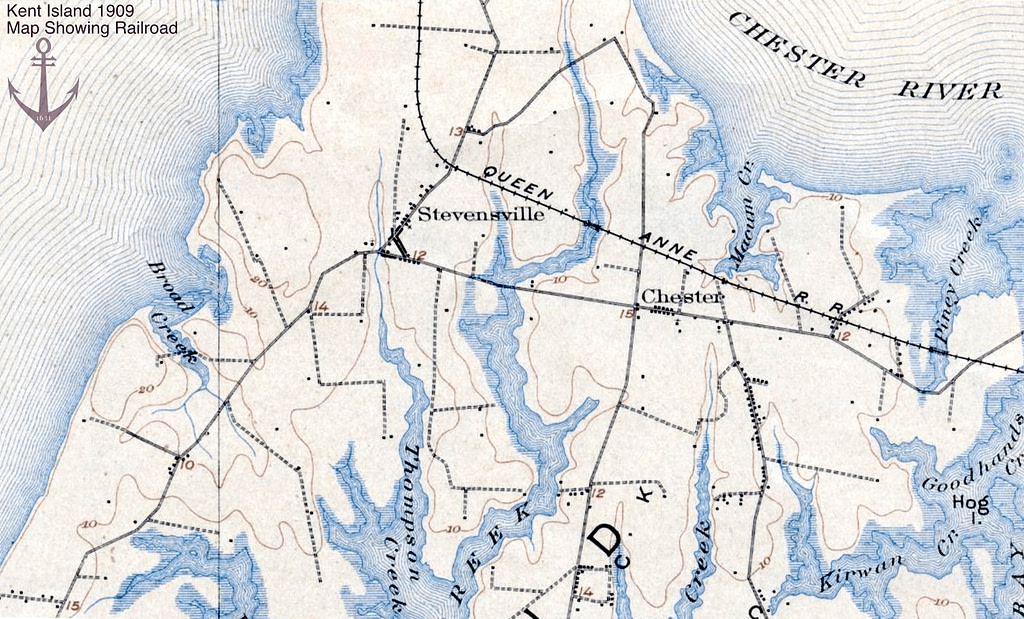
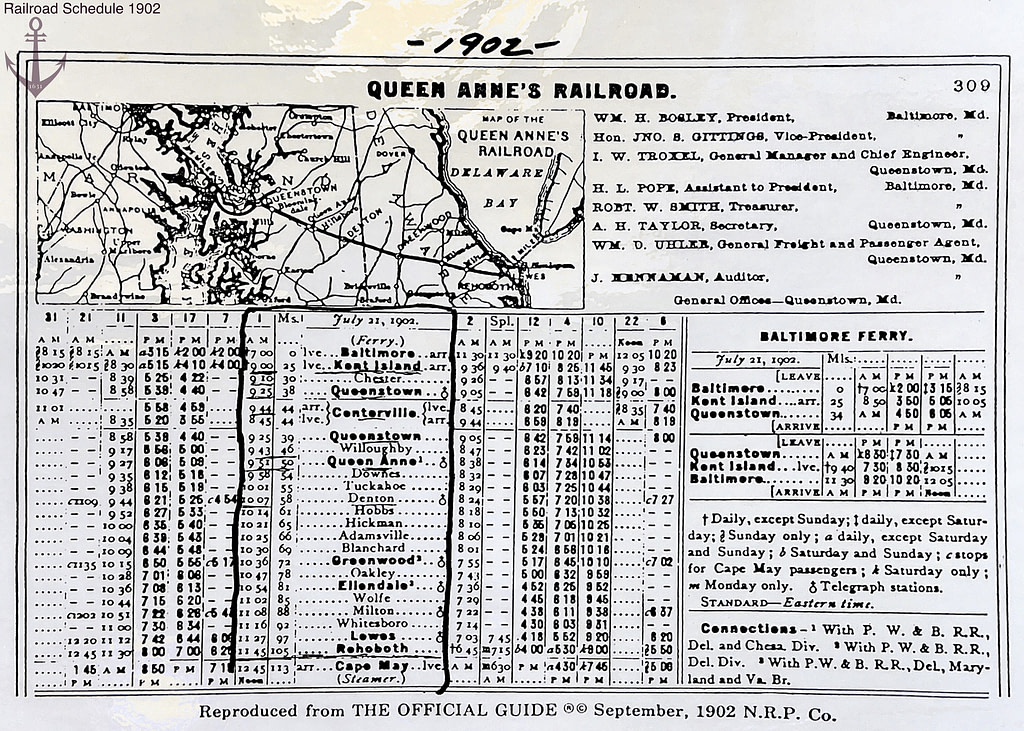
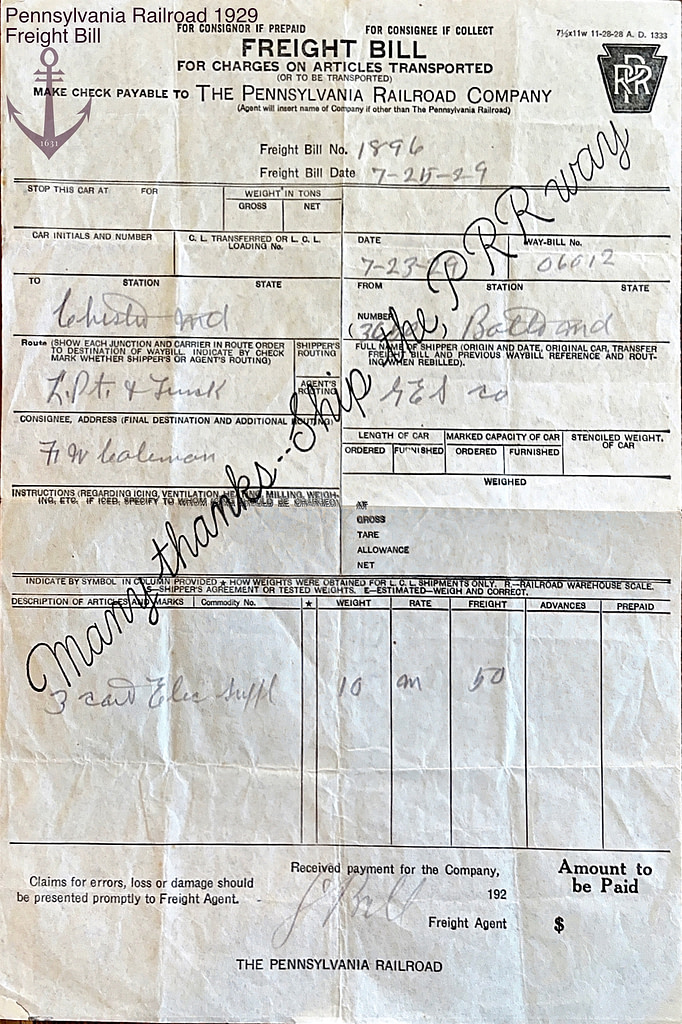
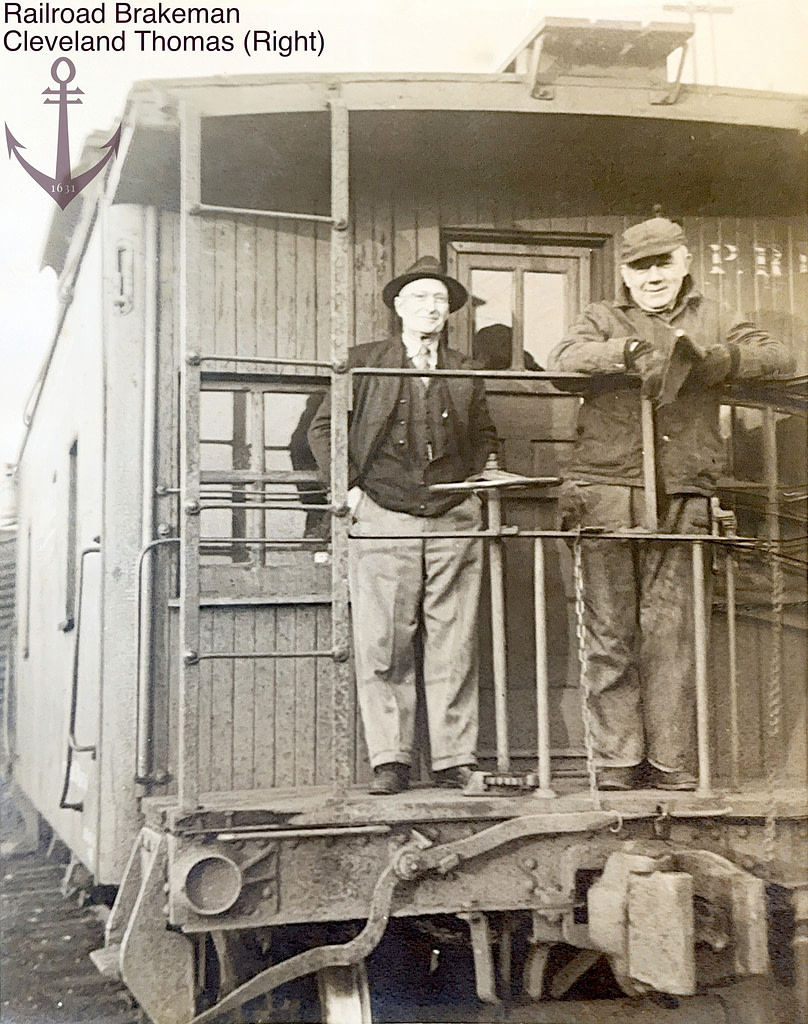
If you enjoyed this Memoir of Kent Island, please donate so that we can research, write, and publish more. Thanks for your support.
Resources:
3/19/1891 - The Republic - Tie and Rail
10/11/1904 - The Pittsburg Press - Purchased By Pennsy
1/14/1905 - The Democratic Messenger - Maryland Delaware and Virginia Ry. Co.
2/8/1905 - The Smyrna Times - Pennsylvania Railroad In Control
5/17/1928 - The Pittsburg Press - Pennsy Petitions
1/21/1938 - The Star Democrat - Public Service Commission of Maryland Order No. 31752
1/21/1938 - The Star Democrat - Hearing On February 10
2/4/1938 - The Star Democrat - Love Point Train May Be Withdrawn
3/5/1938 - The News Journal - Queen Anne's 'Iron Horses' Finally Bows to Autos, Buses
3/6/1938 - The Baltimore Sun - End of Train Service to Force Mail Change
3/30/1938 - The Baltimore Sun - Train Makes Last Trip on Eastern Shore Run
3/6/1947 - QA Record Observer - Proposal to Stop Ferry Brings Number of Protests
8/21/1947 - QA Record Observer - Ferry to Stop
3/17/1953 - The Evening Sun - Rail Lines on Shore Recalled
3/15/1956 - QA Record Observer - Railroad to Abandon 12.6 Miles
5/30/1956 - The News Journal - Railroad Gets Okay to Abandon its Line Serving Kent Island
1/12/1967 - KI Bay Times - I Remember the Muddy, Dirty, and Vicious Says Franklin Marion Crouse Lewis, Agt
4/14/1988 - Chesapeake Courier - Last Love Point to Easton Run Made in March, 1938
7/13/1989 - KI Bay Times - Railroads Are A Lasting Fancy
12/16/1992 - KI Bay Times - Rails Put County On Road to Resorts in 1897
4/5/2006 - KI Bay Times - Steamboats, Trains Were the Way to Go
Various Articles Written By The Kent Island Heritage Society
Pictures Courtesy of:
The Kent Island Heritage Society
The Queen Anne's Railroad Society
Historic Kent Island Private Collection

0 comments